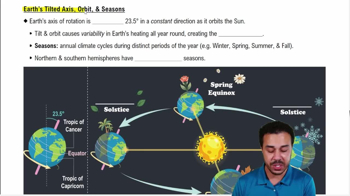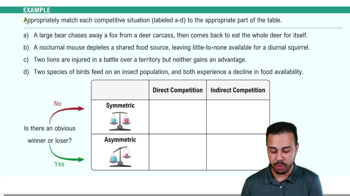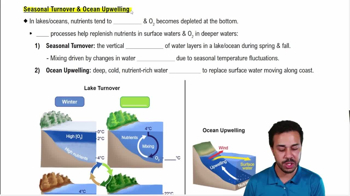Areas of low solar irradiation are
a. Closer to the equator than to the poles
b. Closer to the poles than the equator
c. At high altitudes
d. Close to large bodies of water
e. More than one of the above is correct
 Verified step by step guidance
Verified step by step guidance Verified video answer for a similar problem:
Verified video answer for a similar problem:

